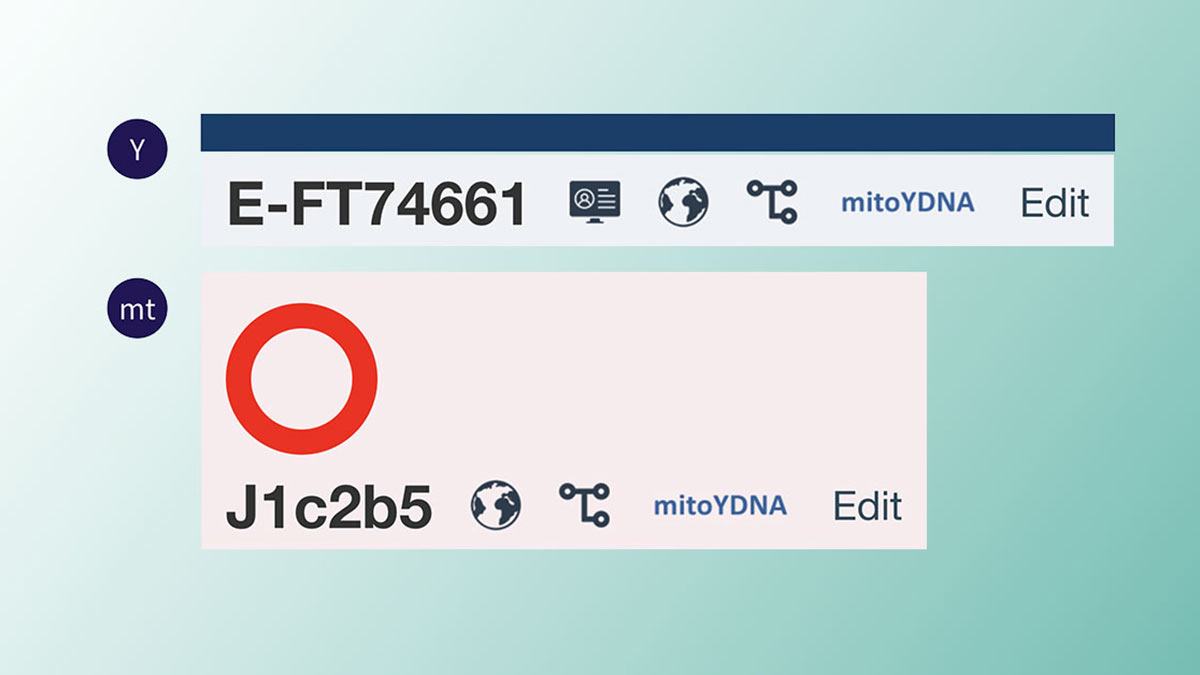I’ve had a few requests over the years to add Y- and mt (mitochondrial) information to DNA Painter chromosome maps. I’m pleased to announce that this feature is now available to all.
What is a chromosome map?
Your chromosome map is a place where you can map the segments of DNA that you share with known and unknown matches. The aim is to visualize and record the DNA that you inherited from specific ancestors.
As you develop your map, you are creating a compact, searchable resource that you can also use as a research log when investigating unknown matches.
What if I haven’t taken a Y- or mitochondrial test?
You can still use this feature. Please read on for more information.
Adding Y- and mitochondrial DNA information
You can now add several different pieces of Y- and mitochondrial DNA information to your map. To do this, please go into any chromosome map and scroll down to the bottom. There you’ll see a Y chromosome if your map is not set to female, and an area for mitochondrial DNA.
To add information, click either ‘Add Y-DNA information’ or ‘Add mitochondrial DNA information.’
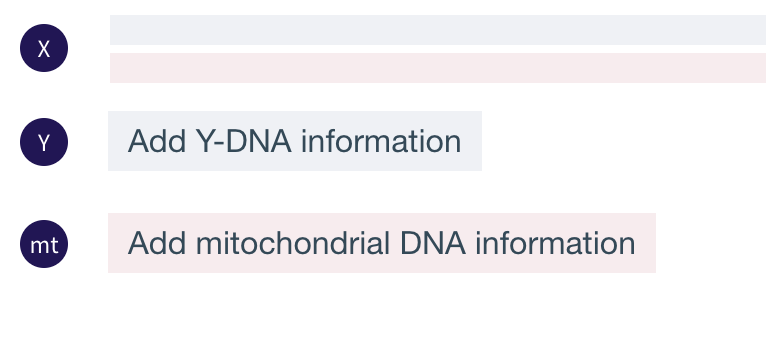
Mitochondrial/Y- haplogroup
Haplogroups are strings of letters and numbers assigned to you by a testing company. They indicate the location of your Y-/mitochondrial DNA within the recorded Y-/mitochondrial haplotree.
If you’ve taken a Y or mitochondrial test with FamilyTreeDNA, you’ll see your haplogroup under Badges after you log in at familytreedna.com.
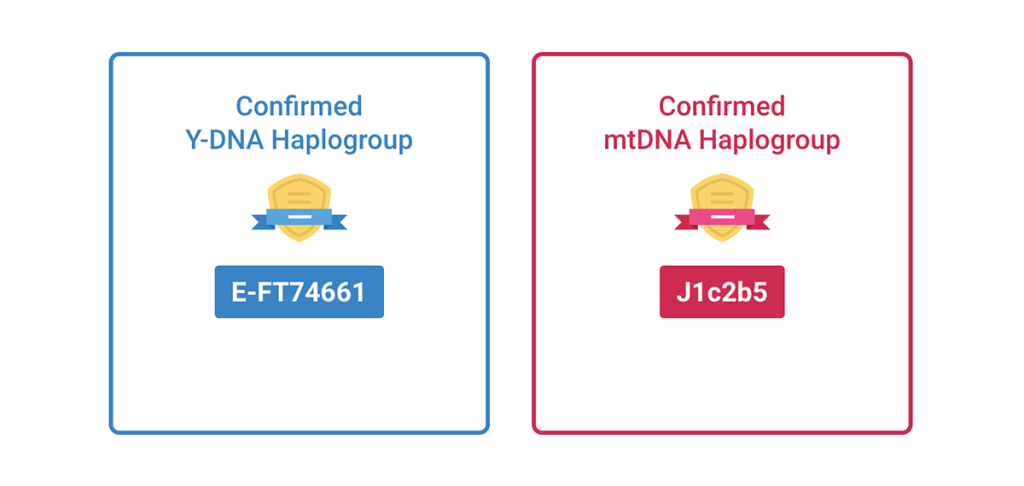
There are other ways to discover your Y- and mitochondrial haplogroups:
- As part of their autosomal test, Living DNA provide you with high-level haplogroups that you can find within your dashboard there under motherline and fatherline.
- FamilyTreeDNA is currently in the process of rolling out Y-DNA haplogroups to all autosomal testers. They have also indicated that they will provide mitochondrial haplogroups in future.
- There’s also a rather fabulous online tool at MorleyDNA.com. This will attempt to predict a high-level Y-DNA haplogroup from the raw autosomal test file of a male tester.

MitoYDNA.org Y-/mitochondrial DNA kit number
MitoYDNA.org is a crowdsourced database where users can compare mitochondrial and Y-DNA kits. If you’ve entered or uploaded your Y-or mitochondrial DNA to MitoYDNA.org. you can find the Kit ID within the Kits you manage table under mitoYDNA ID.
Y-/Mitochondrial DNA ancestor
You can also now specify ancestors for your Y- and mtDNA lines so that they can be colour-coded like the rest of your chromosome map.
Even if you haven’t taken a specific Y- or mitochondrial test, you can enter your Y- and mitochondrial DNA ancestor if you know the identity of your biological parents:
- Select the group corresponding to your furthest back known ancestor on your mitochondrial (mother’s mother’s mother’s mother etc) line.
- If you’re male, you can also select furthest back known ancestors on your Y- (father’s father’s father’s father etc) line.
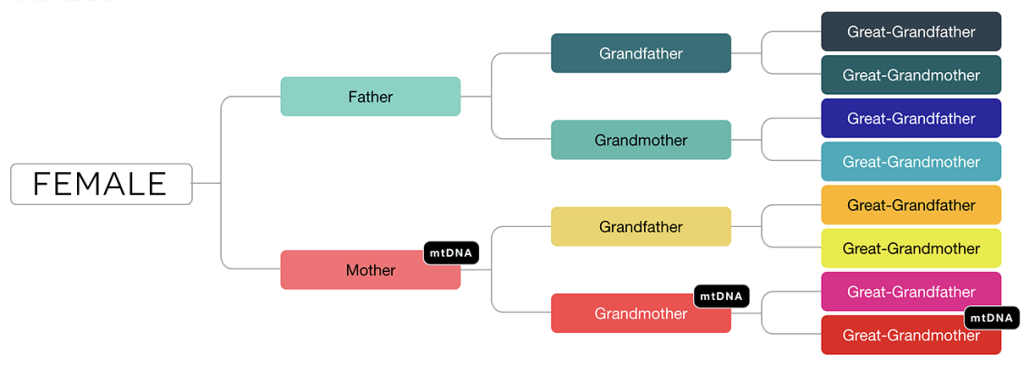
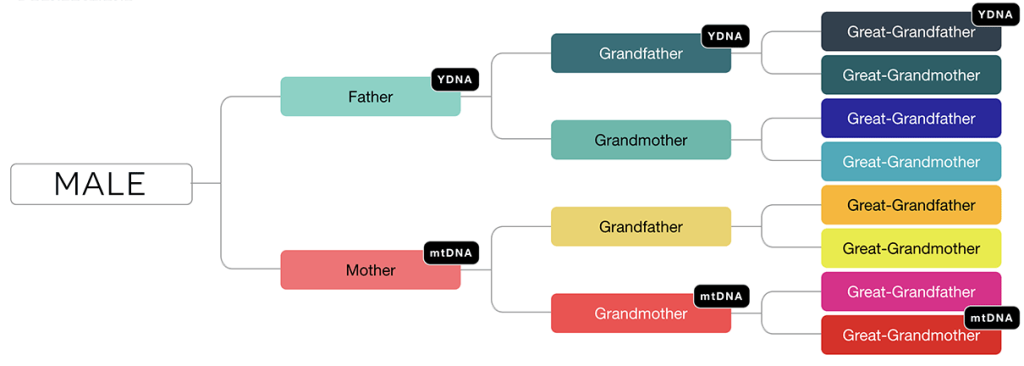
These fields are dropdowns that let you select the ancestor group assigned to your furthest back direct-line male and female ancestor.
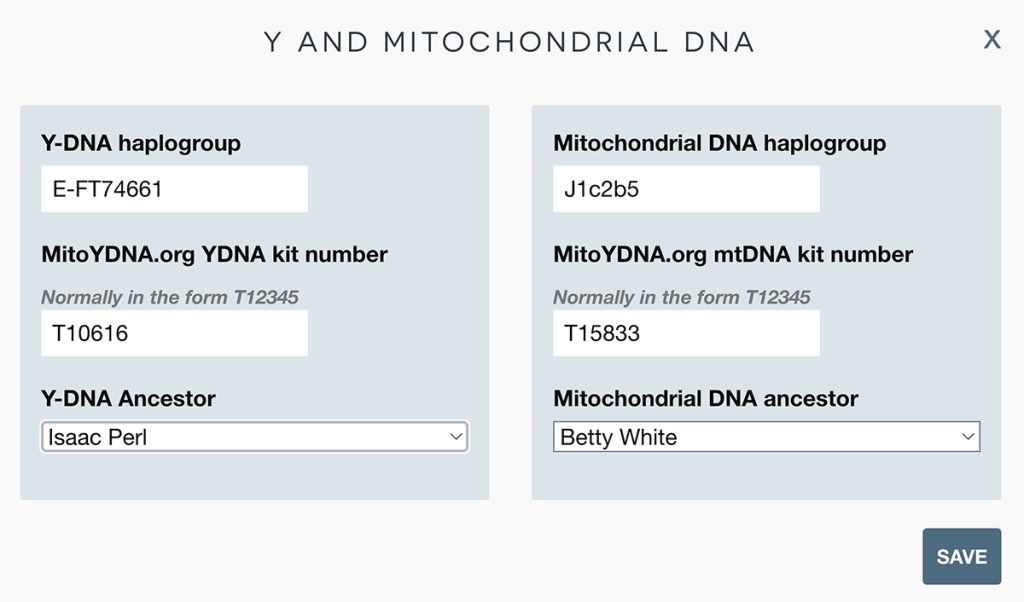
If you don’t yet have a ancestor group assigned to these people, select ‘Create a new group’ to create them within the form. I did this for both my oldest female-line ancestor Betty White and my oldest male-line ancestor Isaac Perl, since I don’t have any autosomal matches that I’ve been able to trace to their families.
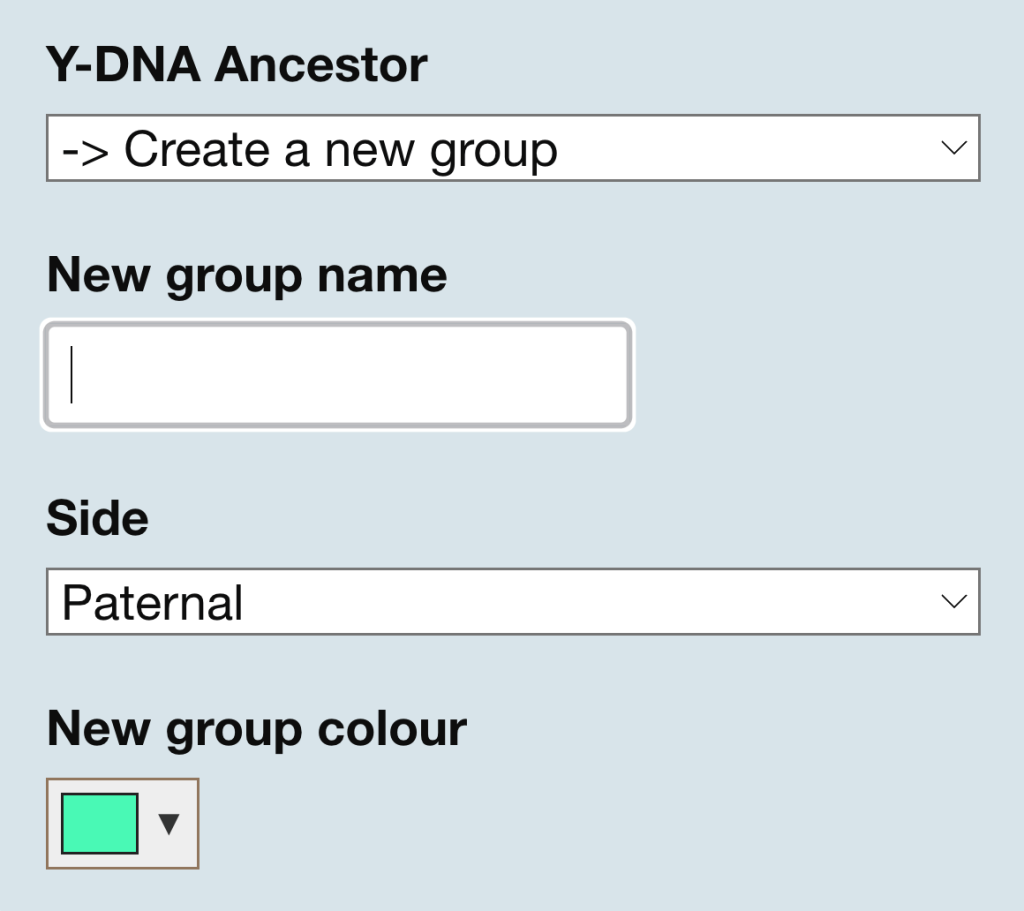
Display
Once you’ve added this information, you map will display it at the bottom, with some icons appearing alongside the haplogroups you’ve entered. These link to:
- The FamilyTreeDNA haplogroup story, SNP path map at scaledinnovation.com and Y-DNA haplotree for Y-DNA
- The path map at scaledinnovation.com and the mtDNA tree for mitochondrial DNA
For both Y and mtDNA, a link to your mitoYDNA kit will be added if you enter this information.
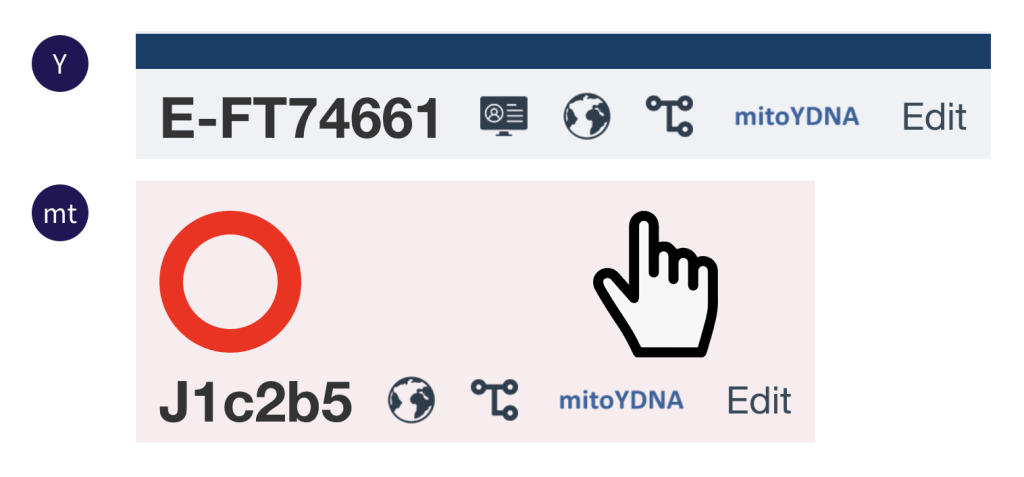
For a more detailed explanation of these links, you can click on the chromosome to see the detail view.
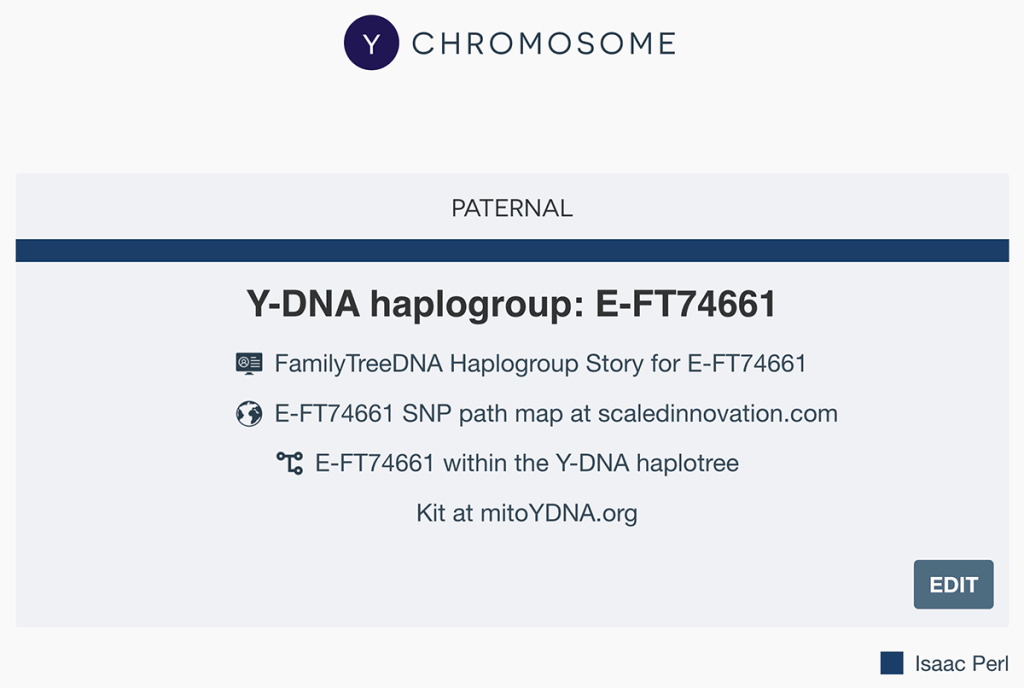
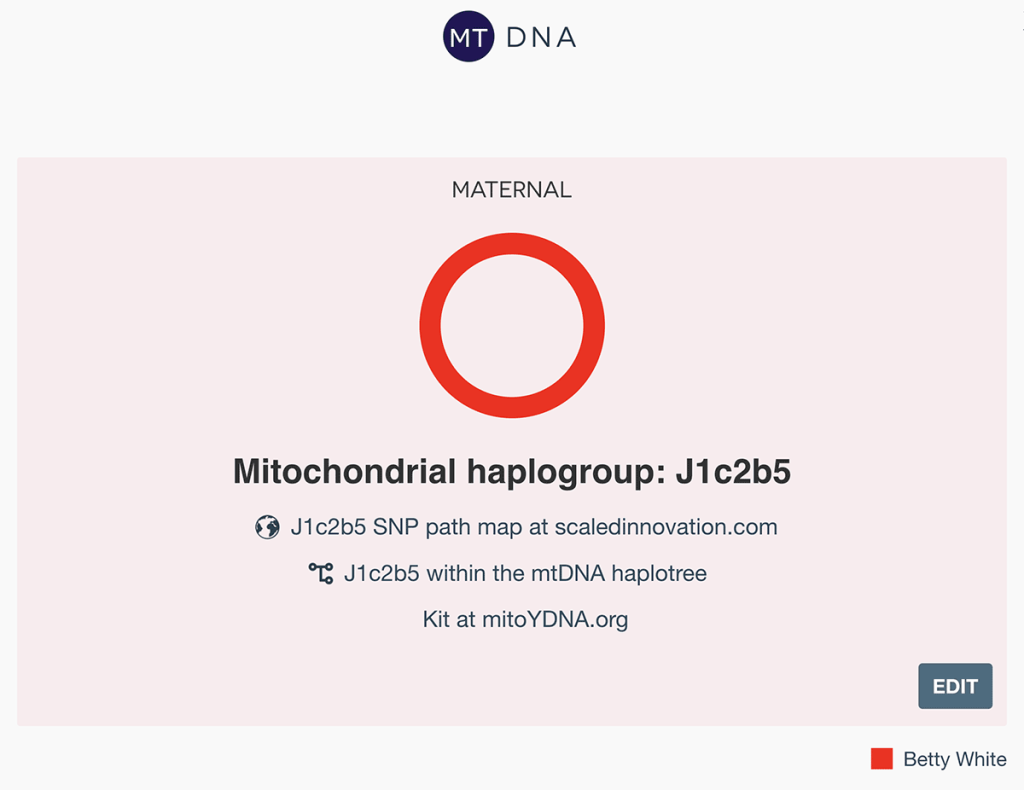
Thanks
I’d like to thank Gareth Henson, Peter Roberts and Mags Gaulden for their suggestions and advice for this feature. Also special thanks to Rob Spencer (owner of scaledinnovation.com) for invaluable suggestions.
I think this a nice enhancement for DNA completists and I hope you like it. I’ll end with a vote of support for in-person conferences. It was a chat with Peter at RootsTech 2024 that kick-started this feature. Then another chat with Gareth at Advancing Genetic Genealogy at the University of Strathclyde, Glasgow helped move things along!
Contact info: @dnapainter.bsky.social / jonny@dnapainter.com
